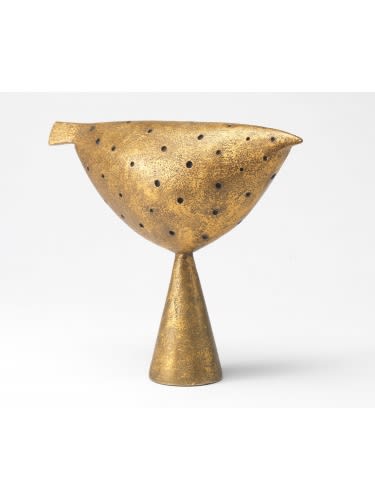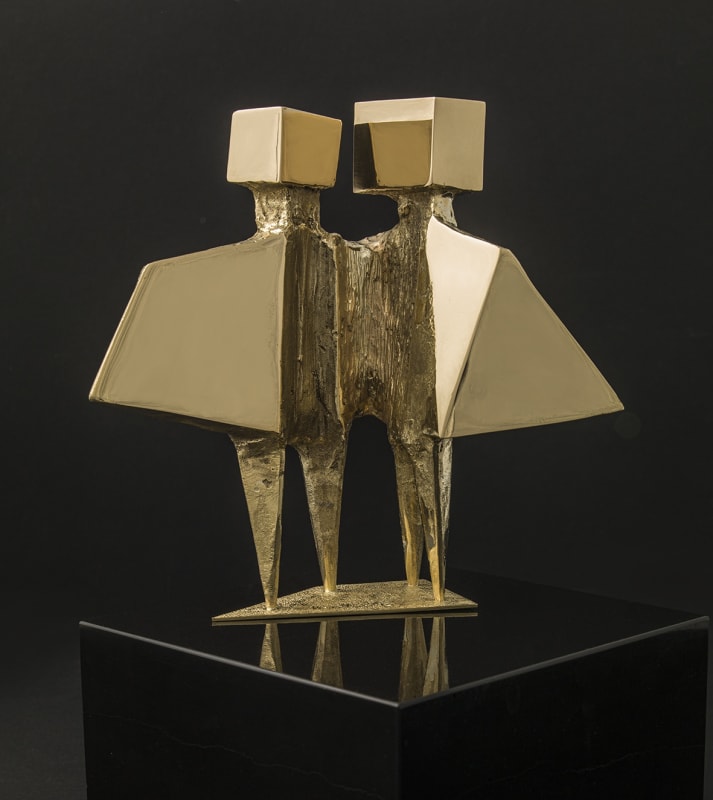Gold cannot be produced on Earth. According to a study published by the University of Bristol in 2011, the planet’s accessible reserves of precious metals are the result of a bombardment of meteorites more than 200 million years after the Earth was formed. Whilst we do not know when man first discovered this lustrous metal, archaeologists have found gold flakes in Palaeolithic caves dating back as far as 40,000 BC.
The first evidence of human interaction with gold on a large scale is in ancient Egypt with the first gold artefacts dating to around 5000 BC. Egyptians were the first to create open gold mines to obtain this precious and rare metal that was then used to make coins, jewellery and furniture.
Gold was exclusively reserved for the use of kings and nobles, and it was considered to be the skin of gods and goddesses in the Egyptian pantheon, as they believed their flesh was made of the same substance as the sun. The sun god Ra was described as having "his bones turned into silver, his flesh into gold, and his hair into real lapis-lazuli".
Mansa Musa or Musa I, ruler of the West African Mali Empire, was the richest man on Earth in the 14th century. Most of his wealth, which was indescribable at the time, came from gold and salt. A devout Muslim he undertook a pilgrimage to Mecca travelling nearly 4,000 miles across treacherous terrain with 60,000 people (including more than 12,000 slaves), 21,000 kilograms of gold, 100 elephants and 80 camels. When he arrived in Cairo, Egypt, he gave a gold nugget to every inhabitant and caused a gold crash in the city and in Egypt for the next 12 years.
Gold can be found in various forms in nature: in nuggets, gold flakes, quartz or mixed with other elements such as iron and sulphur. It has multiple metallic characteristics: it is a soft, malleable and ductile metal, it is also resistant to most acids and is one of the heaviest metals in density.
Since pure gold is too malleable to be used in sculpture and jewellery, it is often alloyed with other metals (such as silver, copper and zinc), making the final piece stronger while keeping its ability to stay shiny.
The process of gold casting is generally done using the lost-wax process. Gold melts at 1064.18C and is poured into a mould that has been created by means of a wax model. Once the mould is made, the wax model is melted and drained away and the metal takes its place. As gold casting can be very expensive, many artists have opted for using gold leaf instead. Gold leaf dates back to the Egyptians, who used it to adorn sculptures. Zachary Eastwood-Bloom's sculpture The Hyper Real has first been cast in ceramic, before being gilded.
Nowadays it is more common to find gold in jewellery than sculpture however a number of Pangolin London artists have used gold and gold leaf in their sculpture and also in their works on paper. In his Study on Gold Series, Bryan Kneale plays with vibrant colours on a golden background.
A FEW FACTS ABOUT GOLD
1. Gold has been found on all continents (except in Antarctica).
2. The oldest man-made gold artefact, a tiny bead, dates back to 4,500-4,600 BC and was found in Bulgaria.
3. The Athena Parthenos, the lost chryselephantine sculpture (gold and ivory) made by the Greek sculptor Phidias in around 447 BC as a focal point of the Parthenon, measured 11 metres high and was made with between 700-1100 kg of gold.
4. The Field of the Cloth of Gold was the name given to a summit in 1520 that was organised by Cardinal Wolsey to improve relations between Henry VIII of England and Francis the First of France. Keen to show off their country's power and eminence costumes and tents were made with luxurious fabric and gold thread, decorations and furniture were covered in gold and even Henry VIII’s monkeys were covered in gold leaf. A painting in the Royal Collection at Hampton Court dating to 1545 shows Henry VIII on horseback resplendent in gold cloak with two large bright gold tents in the background.
5. The biggest solid gold Buddha statue can be found in the Wat Traimit Temple in Bangkok. It is 3.91m high, 3.01m wide and weighs 5.5 tons.
6. The biggest gold coin in the world weighs one ton and is estimated to be worth 1 million Australian dollars. The coin shows a representation of Her Majesty the Queen on one side and a Kangaroo on the other. It is also in Australia that the heaviest gold nugget has been found weighing in at 78kg!
7. During the first Gold Rush in California in 1848, 700 tons of gold were discovered in 10 years.








